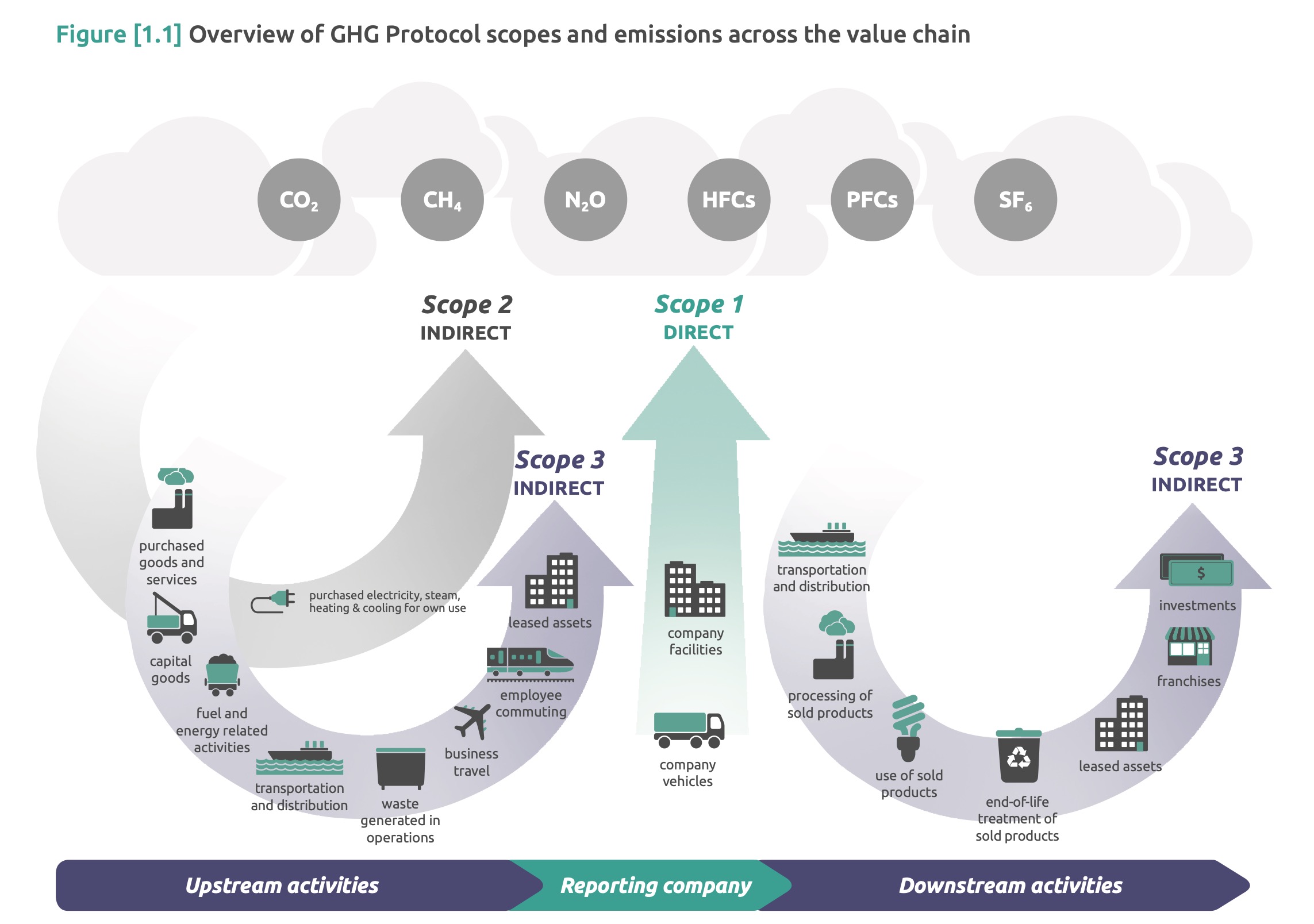ULI’s magazine, Urban Land, recently published an article regarding the SEC’s proposed rule around climate disclosure for Real Estate Companies.
The New Rules
The new rules essentially requires the disclosure of greenhouse gas emissions under the GHG Protocol, including all 3 scopes:
- Scope 1 emissions - direct emissions from owned or controlled sources
- Scope 2 emissions - indirect emissions from generation of purchased electricity
- Scope 3 emissions - all other indirect emissions in company’s value chain, both upstream and downstream
 Green House Gas Protocol - 3 Scopes
Green House Gas Protocol - 3 Scopes
Just to help provide a bit more context, here’s an example of what Scope 1, 2, and 3 means for a building:
- Scope 1 emissions - emissions from fuels that are burned on premise or by vehicles owned by the property, including natural gas.
- Scope 2 emissions - emissions via purchased electricity or other services from the grid, including chilled or hot water (but not the water itself)
- Scope 3 emissions - any upstream or downstream activities that you can attribute to the business, including employee commuting and travel, embodied carbon from materials and assets, water and waste generated, etc.
With these rules set to potentially begin in 2024, there isn’t much time for US based real estate to think about establishing systems to easily collect this data.
GHG Scopes and RESET
For most real estate, Scope 1 and Scope 2 data is already available and is relatively easy to calculate by just keeping track of natural gas and energy bills. To take it one step further, it would be to start making this process automatic and collecting the data onto some kind of software that will make the data more accessible.
Data accessibility will make it easier to leverage this data for other use cases, including reporting for other purposes, leveraging the data when considering capital expenditure upgrades, or facility operations optimization.
Scope 3 is significantly harder, requiring an initial breakdown of all upstream and downstream activities as a first step. I imagine Scope 3 will be a real headache for a lot of companies since it is not well defined yet and is a basket to just throw everything not included in Scope 1 and Scope 2 into.
There are some unique parts of Scope 3 that we are trying to tackle though, namely embodied carbon, both upstream and downstream, via RESET Materials, water consumption monitoring via RESET Water, and waste tracking via RESET Circularity. Scope 3 also touches on tenant emissions, which can be facilitated with RESET Energy and can be built into a tenant engagement piece, leveraging the sharing of data as a starting point of engagement.
All of this aligns with RESET’s purpose of helping built environments become heather and more sustainable by promoting data collection and continuous monitoring via standardization. We strongly believe that we cannot effectively solve what we cannot measure and that data will be the key to building awareness and visibility towards the problems that we face and it will help us better engage with finding the right solutions to our problems.
My gripes with the GHG Scopes
The GHG Protocol and the Scopes are great because they have created a framework for the carbon conversation that we are having today. My main gripes with it is the complexity that it introduces.
I was asked a few months ago on whether or not a carbon tax would work. My answer was that there first needs to be a transparent, clear cut, and easy way to collect that data. If it wasn’t easy for all parties involved to collect and get access to the data, the tax would not work because it wouldn’t be easily auditable and there would be no trust in the system.
The GHG Protocol currently requires too many middle parties and there are too many different interpretations on exactly how to collect and measure the data. I look forward to when we are able the process is more defined and straightforward.
If I could re-design the approach, it would be to first establish the different relevant categories where emissions can come from. Then, make sure that there is an easy and straight forward way to collect data for this category. If the categories are established with clear rules for how data is collected, then companies will only need to compile data for the categories that are relevant to them. Because each category is a stand alone module, this will allow for yearly updates where individual categories get minor upgrades or new categories get updated when new industries or businesses are created.
In any case, the trajectory of the industry and the world, in regards to climate change and carbon, has been very positive and promising and I am very excited for where we go next.
About RESET
RESET is a set of standards and assessment tools & services to develop actionable, long term strategies towards health and sustainability for the built environment.
Learn more about RESET.
